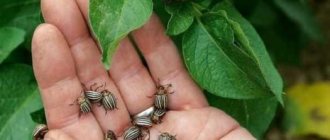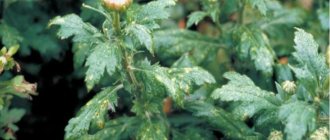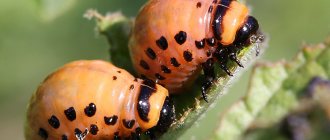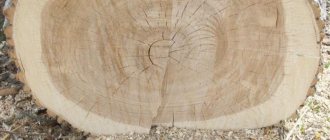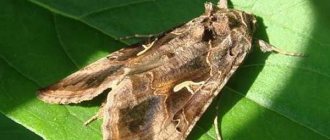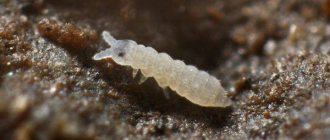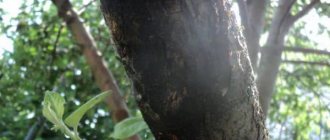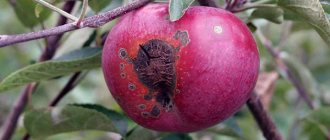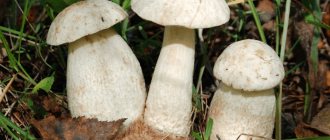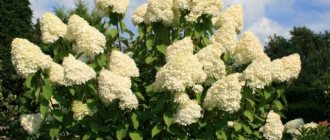Bark beetle nutrition, what damage they cause
At all times, bark beetles were considered very dangerous for garden plots, since they feed exclusively on wood, so in a few years they can destroy not only the entire territory, but also all wooden structures.
Ecology of bark beetles
All bark beetles are herbivorous insects that mainly nest under the bark of various trees and shrubs. They are especially sensitive to tree sap flow, temperature and humidity in places where reproduction usually takes place. Since there are many types of bark beetles, their settlement occurs in different parts of the crown, roots and trunk.
It must be remembered that the feeding of the bark beetle can lead to the fact that the house becomes completely uninhabitable. That is why you cannot slow down with actions, otherwise the consequences will not be very comforting. First of all, this applies to country houses and dachas, where this pest is most often found.
Very often, the bark beetle resembles the cockchafer, but its color is a little brighter. Thanks to the shape of the head, you can also find out what type and gender of the pest is represented. The male has depressions and pits on the forehead, and the females have a convex forehead with large growths, and they are also significantly larger in size than the males. The color color mainly changes depending on the territory where the beetle is located.
How to detect a bark beetle infestation
The main sign of the presence of this insect is that it leaves behind heaps of white dust. That is why, if this pest is discovered, you should immediately take basic actions. First you need to find out how much the trunk was damaged. Scissors will help with this, where you will need to pierce the suspected affected areas with a sharp angle.
The feeding of the bark beetle is accompanied by the following symptoms:
– the bark beetle inhabits wood, which is a favorite place for woodpeckers;
– damaged bark has holes of different shapes;
– drill sawdust accumulates on the bark;
– coniferous trees gradually acquire a red color;
– woodpeckers began to appear very often in the contaminated area, as they feed on beetle larvae;
– the bark completely falls off, and tunnels in the form of drawings are visible under it.
It is necessary to use all possible methods to combat the bark beetle, which will destroy it as quickly as possible.
Preventive measures include:
– processing of land;
– proper cleaning and formation of tree crowns;
– timely removal of leaves;
Destructive agents include:
Bark beetle larva: how to fight in the house
Protective agents such as “Antizhuk” and “Antishashelin” have proven themselves well in the fight against destructive bark beetle larvae. By covering the wooden products in your home with these substances, you will get rid of the wood parasite in the shortest possible time.
You can also use traditional folk methods of struggle, the effectiveness of which has been tested for generations. So, ordinary kerosene, diesel fuel or solid oil will help quickly destroy the beetle.
In specialized stores you can purchase modern insecticides that are convenient and harmless to humans, but harmful to the bark beetle.
Although, according to most experts, despite all their toxicity, modern means do not provide a 100% guarantee of successfully getting rid of the beetle.
Bark beetle feeding on tree bark
The bark beetle is capable of destroying the solid structure of any tree in a short period of time, so if no decisions are made, then any wooden building can become unusable. The bark beetle feeds exclusively on the bark of trees, making long passages in the wood that deprive the tree of its viability. As you know, a tree is nourished by moisture and nutrients that enter through the trunk. This pest very easily disrupts the flow of moisture, which leads to drying out of the wood. Very often, bark beetles carry a fungal infection and cause great harm to young seedlings that have not yet had time to take root after transplantation.
Many species of bark beetles have special elytra, that is, devices that allow them to throw sawdust out of passages. Very often these elytra are called “wheelbarrows”. Many females make several tunnels, which can go either up or down the trunk. The gnawed bark spills out very conveniently from the upper passages, but effort is required to remove it from the passages that are directed downwards. It is the “wheelbarrows” that help carry all the portions of drilling flour outside.
How bark beetles choose wood
It is possible to determine where the paths of the bark beetle lie without tearing off the bark: if brown sawdust is visible, then the pest gnaws through the wood immediately under the bark, and if white sawdust is visible, the beetle is located deep in the tree.
Using their sense of smell, bark beetles select the type of tree on which they will feed. Thanks to the smell, they accurately determine what type of tree they need, and also easily distinguish a healthy tree from a depleted one. They perceive the smell of wood, which is favorable for the settlement of offspring and drilling, at a distance of up to 1 km. In general, females have a greater sense of smell than males, which is why there are several times more of them per occupied trunk. It is quite difficult for bark beetles to colonize a tree, since they do not have time to drill into the tree before sap actively flows out, and in coniferous wood, resin. That is why the first beetles very often do not survive. After a while, the tree becomes unprotected, loses its reserves and becomes real prey for bark beetles. Due to the fact that there can be several settlements in one trunk , the bark beetle feeds at some intervals from each other.
Description of the pest
The size of an adult insect is 0.8–9 mm, some tropical species grow up to 1.5 cm. Bark beetles belong to the family of weevils, unlike which they do not have a rostrum. The body of bark beetles is colored black, brown, red-brown. The antennae and paws have a lighter shade.
The compact head with a flat or curved forehead is retracted into the prothorax. Some species may have a bump or small pits on the front of the forehead. The insect's eyes are large, round or oval in shape, often with a notch, due to which they appear to be divided into 2 parts. The antennae are short, geniculate with a compact club.
Bark beetle - appearance
The chest consists of 3 segments. The most important part - the pronotum has an oval, quadrangular, triangular shape. It is most often rounded on the sides and narrowed towards the top.
The surface of the pronotum is covered with tubercles, denticles, and sometimes punctures. Bark beetles have strong, well-developed elytra with dotted grooves. Beneath them are membranous wings.
On the elytra there is a depression (wheelbarrow), through which the uterine passages are cleared of drill flour. The abdomen of the bark beetle is horizontal, often sloping towards the apex. In females it is wider than in males.
The beetles' legs are thin, the front ones are short, digging with teeth on the legs, the hind legs are longer than the front ones.
Reasons for weakening trees
Weakened trees may be those that are located near buildings or grow close to each other. This situation greatly weakens their root system, so they do not develop as required. Another reason for weakening is various types of mechanical damage - cracks and open cuts. Very often, the bark beetle attacks trees that were previously damaged by the beetle and that were not treated in time. Finding stumps, dead wood and mushrooms in the area will be an ideal place for bark beetles. It is necessary to understand that timely, correct and sufficient treatment of trees will help avoid attacks by bark beetles.
It is known that even bark beetle larvae are able to feed and develop quickly. A sufficient amount of sugars and protein compounds helps them in this.
What is the danger of the bark beetle
Bark beetles are dangerous and numerous forest pests that attack weak trees, so they try to cause their death as quickly as possible. Their actions prepare the environment for other settlements, which will ultimately render the wood unusable.
A tree is an object of interest to the bark beetle for many reasons. It becomes not only food for adult bark beetles, because the main danger lies elsewhere. The greatest harm to trees is caused by the larvae, which are distinguished by their enormous gluttony and the creation of a large number of labyrinths under the bark. Bark beetles hatched from eggs begin to actively destroy trees, because they need to gain strength and grow. It is necessary to understand that when these harmful destroyers are exposed, the diseased trees must be immediately removed or destroyed.
The benefits and harms of the bark beetle in the garden at their summer cottage
The benefits and harms of the bark beetle include all the damage that this insect can cause to trees and wood. Despite its small size, an adult is capable of gnawing through material and creating numerous tunnels. In nature, there are a huge number of varieties of this pest, and some of them parasitize cultivated plants, fruit trees, and even furniture and building materials made from wood. It is useful not only to know how to deal with the bark beetle in the garden and at home, but also to carry out preventive measures in time to avoid its appearance and reproduction.
Causes of the pest and how to recognize it
When the construction of wooden buildings begins, all materials are treated with special compounds that prevent the proliferation and appearance of the bark beetle. Unscrupulous builders may do a poor job and fail to completely secure your home. Also, the reason for the appearance of bark beetle in the house may be the use of low-quality raw materials for the construction of the building.
In the garden, bark beetles appear much more often, because the insects are very common and dangerous. In search of food, they can explore the neighboring territory, infecting your garden. Pests actively destroy one tree, then spread to another.
How to recognize a bark beetle in the garden? Carefully inspect the trees; if you find a hole in the bark, take a closer look at it. The presence of wood dust is a sure sign of a bark beetle in the garden. Small holes do not guarantee that the core of the tree will not be damaged. You can verify this with a sharp knife. Pierce the bark next to the hole; if there is emptiness there, immediately declare war on the bark beetle. Similar signs are present in an infected house. Pay attention to yellow dust and holes.
Important! If the trees in the garden are infested with bark beetles, they will soon take over the house, so start fighting the uninvited guests as early as possible.
Description and varieties of bark beetles
In order to start fighting the pest in time, it is important to know what the bark beetle looks like. This is a whole subfamily, which has 750 species, and about 140 of them are common in Europe. They got their name from their ability to survive under the bark of trees and go through a full life cycle there. Most beetles are no larger than 8 mm in size, but there are varieties that are only 1 mm long. The largest species live in the tropics and grow up to 1.5 cm. They are dark brown, with a small head and several rows of teeth on the back. The wings have long stripes or scales.
Varieties of bark beetle
Most often, the benefits and harms of the bark beetle affect fruit trees.
At home and in the garden you can find several main types, which differ in color and size:
- The domestic bark beetle is the largest, can grow up to 1.5 cm. It forms large tunnels in fruit trees, completely destroying them from the inside. Its full life cycle is 10 years, so it can rarely be detected in the initial stages of infection.
- The furniture bark beetle is a small pest, up to 3 mm in length. The life cycle of this beetle is no more than 3 years. The parasite can exist at home, gnawing through furniture and wood.
- Powdered bark beetle is a specific pest that processes wood into powder. More often it lives at logging and wood processing sites, since it more often parasitizes fresh wood.
The main substance that the bark beetle feeds on is wood of different types, ages and conditions. In nature, the beetle is considered a forest orderly, since it utilizes damaged trees and accelerates the processes of nitrogen metabolism.
Types of bark beetles
What does the bark beetle and its larva look like? Among the wide variety of bark beetles, the following deserve special attention:
- Zhuk typographer. The size of the parasite reaches 5 mm. Black body with brown hairs. The insect's favorite delicacy is coniferous trees, but it will also not miss young trees or stumps of felled trees on its way. The main threat to the life of trees is not from adults, but from larvae, which in a short time of their activity are capable of turning a flowering tree into a lifeless formation.
- Furniture sharpener. A beetle characterized by its small size and brown color. Just like other species, the grinder does not cause any particular harm to wooden products, unlike the larvae, which, eating wooden products from the inside, cause significant damage to furniture. It is important to remember that the larvae of this woodworm can gnaw holes not only in furniture, but also in floors or wooden windows.
- The pine beetle is considered the most common species of bark beetle. The favorite habitat is taiga. The beetle can move a considerable distance. The slightly elongated body is densely strewn with black or dark brown hairs. The color is determined by the environment and place of settlement. The larvae laid by the female, after a short time, cause damage to the trees, breaking through a large number of different tunnels.
- Sapwood. Big fan of oak trees. After 2 weeks, the eggs turn into a larva, which leads an active lifestyle for 20 days before turning into a pupa. The pupal stage lasting 12 days is followed by the stage of emergence of the adult.
The bark beetle larva has the shape of a sickle, bent towards the abdomen. Many callus-like pads assist the larva during movement. The body, devoid of legs and painted white, is adjacent to a brown head.
Life cycle of a pest
Most beetles develop a similar life cycle, but the duration will vary between species. First, the female lays eggs in cracks in the bark, which then develop into larvae. They develop for several years under the bark, feeding on wood and gnawing tunnels.
The main factor why the bark beetle is dangerous is that damage to trees occurs unnoticed, since the larvae do not emerge to the surface for several years.
They then move to the surface and transform into winged beetles through the pupal stage. When the beetles become ready to mate, their development cycle repeats.
The benefits and harms of bark beetles at home and in the garden
For different types of trees and wood there is a bark beetle. These pests completely destroy the inside of the trunk, leaving the bark intact. When they populate in large numbers, it is impossible to get rid of them, since they are located deep in the trunk. The only positive feature is that bark beetles often colonize specimens that are already old or affected by other pests, and which are already weakened due to age or disease.
In order to start fighting the pest in time, it is important to recognize it in the first stages:
- the first sign is the appearance of a large number of woodpeckers;
- leaf falling, deterioration in the general appearance of the plant and its condition;
- the appearance of small holes in the bark;
- the appearance of dust that spills out is a sign of a severe degree of infection;
- peeling of the bark is a symptom of the death of a plant due to pests, even if there are branches with leaves on it.
At home, the bark beetle is not beneficial. However, the damage to log houses and wooden structures can be compared to a fire - if the beetle is not noticed in time, they cannot be restored.
Features of the bark beetle
The bark beetle was named so because it spends a significant part of its life under the bark. The males of such beetles have a concave head, while the females have a sharply convex head. On the predorsum of beetles there are tubercles and denticles. The elongated quadrangular back of the beetle is almost spherical. Scales or stripes are densely located on the surface of the elytra. In adult beetles, the body is brown and the head is almost black. The worm-like, legless bark beetle larva has a whitish color. Some species live mainly in cut trees, while other species prefer to live only on living plants. However, there are also species that are able to live either on a cut tree or on a living tree.
In a tree, each type of such beetle makes tunnels of a certain shape, from which it is possible to find out which bark beetles have settled on the plant. Females gnaw through the bark and make passages in the tissues of the tree in which they lay eggs. After some time, larvae emerge from the eggs and feed on both plant tissue and its sap, this leads to the destruction of the tree from the inside. The grown larvae pupate and spend the winter inside the plant. And with the onset of spring, adult individuals fly out and try to find a mate.
Pest control measures
The most effective remedies for bark beetles in the garden:
They contain substances that have a detrimental effect on beetles and the larval stages of parasites. Some of them (“Antizhuk”) provide additional protection against fungus. The drugs are poured into the holes on the bark using a syringe. The procedure is repeated several times, and then the bark beetle passages are closed with ordinary garden varnish. All treatments are carried out in a protective suit, gloves and a respirator.
Preventive actions
Knowing how to deal with bark beetle on fruit trees is not enough.
There are simple and effective preventive measures that will prevent the appearance of these pests. These include:
- pruning dry and damaged branches in the garden;
- treating the lower part of the bark with lime;
- add crushed laundry soap to preparations for treating trees - this will allow them to better adhere to the bark;
- laying out bark beetle traps for the summer (ordinary blocks of fresh wood) - the method is not effective enough, since different types of beetles may prefer trees of different varieties and ages;
- additional treatment of the trunk and large branches with folk remedies (clay mixed with humus or lime with manure).
If characteristic holes appear on the tree bark, this indicates a high degree of infection. In some cases, all methods of dealing with bark beetle larvae may no longer be effective.
The balance of benefit and harm from the bark beetle clearly outweighs the harmful effects. These parasites can completely destroy fruit trees and even building structures. Regular preventive treatments are more effective, since beetles can remain in wood for a long time unnoticed.
How to destroy a bark beetle - video
How to get rid of bark beetle in the house
Those who live in multi-apartment high-rise buildings and have never had a summer house may not have even heard of such a problem as the bark beetle, or, as it is also called, the wood borer beetle. But the owners of country estates know firsthand how much harm this small insect can cause and what danger it poses to the garden and wooden buildings.
How dangerous is the bark beetle?
This question may cause confusion. In fact, what threat can a small insect whose size does not exceed a centimeter pose? Doesn't bite like mosquitoes or fleas, doesn't carry germs like flies. It turns out that it does not pose any threat to human life and health. And pets will not suffer from it. So, what is the danger?
The bark beetle is a small insect that does not pose a threat to human health.
The beetle's natural habitat is trees. In them, the bark beetle, gnawing through the bark, takes refuge from various dangers and feeds. Having reached the core of the tree, the female beetle lays eggs, which within a week turn into larvae. They are the ones who do the most harm. Immediately after hatching from the eggs, the larvae begin to intensively feed on sap and wood fibers. One larva eats up to 10 grams of wood per day, thereby creating entire labyrinths of winding passages . In winter, they hibernate, but do not die. They can withstand temperatures down to -30 o C. The process can last up to three years. The larvae then develop into pupae and adults, which reproduce again.
The greatest damage to trees is caused by bark beetle larvae.
Adult beetles fly to other trees. The objects of their invasion can be wooden buildings: a house, a barn, a bathhouse, where they also gnaw passages and lay eggs. A wooden structure infected with a bark beetle gradually turns into dust. It is especially dangerous when the insect attacks the supporting structures of a wooden house. This directly poses a threat to humans. After all, at any moment, supports and partitions can collapse and cause serious injury. In addition, some types of bark beetles carry fungal spores when moving. As a result, mold will soon form on wooden structures, which in itself is harmful to health.
A wooden house and other buildings can become a target for an invasion of bark beetles
Quite often, bark beetles spoil wood in storage facilities and warehouses. And it happens that a wooden house is built from already contaminated building materials. To avoid this, you should take the following precautions:
- When purchasing lumber for a wooden house, check it carefully. Pay attention to small holes and peculiar paths made by the beetle.
When purchasing lumber, pay attention to small holes and paths made by beetles.
When purchasing logs, pay attention to the ends
Before moving into a new wooden house, treat it with an antiseptic to protect against bark beetles.
Sometimes, due to the fault of unscrupulous manufacturers, furniture made of natural wood becomes infected with bark beetle. The situation is dangerous not only because the piece of furniture will quickly become unusable, but also because of the consequences for the entire room. Once in the house, the beetle will certainly find other wooden objects, be it the floor, window sill or other furniture.
Purchasing furniture with traces of bark beetle is the first step towards infesting the entire house
Bark beetle in the house - how to deal with it
The bark beetle lives not only in the garden and in the forest. It can live in wooden buildings and structures, and in wooden furniture . The main reasons for this proximity are:
- natural migration of insects in search of better habitats;
- the use of low-quality and beetle-infested materials in the construction of a house, barn, bathhouse, as well as the purchase of infested furniture;
- high humidity on the land and in the house.
If single holes are detected, the passages are filled with insecticides from a syringe. Then the hole is closed so that the liquid does not leak out and the pest does not get out. The treatment is repeated 2–3 times with an interval of 10–14 days. Popular household products are “Neomid Antizhuk”, “Rogneda Antizhuk”, “ PROSEPT Ultra”, “Wood Healer” .
At the initial stages, you can clean the wooden surface and treat it with drying oil, used machine oil, kerosene, white spirit, copper sulfate .
In difficult cases, contact sanitary services for professional treatment of the premises.
How to understand that a bark beetle has appeared
The beetles live inside wooded areas and are predominantly nocturnal. Therefore, there is little chance of seeing the bark beetle in person. But, nevertheless, you can determine that there is a bark beetle in the house:
- Carefully inspect wooden structures and objects: walls, ceilings, partitions, furniture. If they have small holes about 1–2 mm in diameter, this is an alarming signal. Gnawing out passages, the bark beetle leaves behind white or light yellow wood dust, which is sometimes called drill flour. It can accumulate near openings or on the floor near the baseboard.
How to get rid of a pest
Sometimes you can come across an opinion on the Internet that it is almost impossible to remove bark beetles on your own. But don’t immediately start to despair and panic if you find traces of a bark beetle in your house. Most often, such statements are made by the owners of pest control companies along with an offer to solve your problem efficiently and in a short time. It’s really not easy to get rid of the bark beetle, but perhaps there would be a desire.
If you don’t have confidence in your own abilities or the ability to fix the problem yourself, you can always turn to specialists for help. Professional companies, as a rule, are well versed in modern high-quality means of combating beetles, have in their arsenal proven and reliable methods, the necessary equipment and work experience.
Fumigation of a wooden house with phosphine gas is a proven way to kill beetles
The peculiarity of phosphine is that no immunity, addiction or resistance to the drug is observed in insects. Phosphine is a hazard class 1 gas, deadly to all living things. You can find out more about the process and advantages of fumigation on the website.
Unlike the microwave method, fumigation allows you to treat the entire house. Insect destruction occurs at all stages of development.
The company's clients include hundreds of customers who were satisfied with the results of fumigation with phosphine gas against beetles in wooden houses. And all thanks to an individual approach to the situation and problems of each specific client. The company’s specialists are studying the situation comprehensively, analyzing the outbreaks and causes of the appearance and spread of beetles. All services are tested and approved by the relevant government agencies. There are licenses, permits, approvals, all necessary documentation.
Traditional methods
You can use a combination of insecticidal agents prepared at home with a mechanical method. Most effective in the initial stages of infection. To check the degree of damage to wood by a beetle, take an awl or screwdriver and stick it firmly into the tree. If there are many empty cavities inside made by the bark beetle, the awl will go into the material easily and deeply. With minor damage, the tool will only go slightly deeper into the material.
If there is a strong infestation, there are many empty cavities inside the wooden surface made by the bark beetle
If the wooden structure is not heavily corroded by the bark beetle and has only a few openings/entrances, it is advisable to carry out the following complex procedure:
- Take the wire, insert it all the way into the hole and rotate it. Such stripping will partially destroy the passage and destroy a certain number of insects at different stages of development.
- Next, the surface and passages of the bark beetle must be treated with a special compound. An insecticidal agent can be applied to the surface of a wooden structure using a spray bottle or a sponge soaked in a solution. It is convenient to process holes using a syringe. To do this, insert a needle into the hole and squeeze the insecticide out of the syringe until the liquid flows freely into the tunnels made by the beetle. Processing can be done by any of the following means:
You can treat the holes made by the bark beetle using a syringe.
- Combine 3 parts turpentine and 1 part kerosene. Stir well. Apply to external surfaces and deep into holes. The product effectively destroys both adult individuals and their eggs and larvae.
To effectively remove bark beetles, you can use a mixture of turpentine and kerosene
You can prepare a bark beetle remedy from paraffin, rosin and vegetable oil.
Vaseline oil is an environmentally friendly and safe means for removing beetles.
Hot drying oil can remove bark beetles, but there is a risk of ruining the appearance of the wooden surface
Holes made by a beetle in a wooden wall can be sealed using acrylic or silicone sealant
If certain areas are heavily infested, you will have to act more radically:
- The damaged area with a large number of internal cavities left by the bark beetle must be carefully cut out and burned.
A hopelessly damaged part of a wooden structure will have to be replaced
- Cover the surface around the area to be treated with plastic film so that all chips, shavings and sawdust collect on it. This will protect other areas of the surface from beetle larvae and eggs.
- For the same reason, it is better to use hand-held mechanical tools for work, since electric devices spray sawdust over a wider area.
- Restore the cut section of the wood structure. To do this, cut out a part of the appropriate size from a new material, try it on to the missing area, and then attach it with glue or secure it in another way.
- Treat the entire surface of the structure using the methods described above.
Special chemicals
If the area affected by the bark beetle is large, it is no longer possible to do without industrial insecticides. Here it is important to strictly follow the instructions for use, observing the specified proportions of solutions, and not allow any amateur activities. Otherwise, you can cause harm to yourself and others. Particular attention should be paid to safety precautions. When working with harmful substances, you must protect your respiratory organs, eyes and hands. Therefore, be sure to use a respirator, rubber gloves and safety glasses. After finishing treatment, take a shower.
When working with chemicals, you must use protective equipment: mask, rubber gloves, goggles
Sources:
https://sesrus.ru/pitanie-zhuka-koroeda https://glav-dacha.ru/polza-i-vred-zhuka-koroeda-v-sadu/ https://legkovmeste.ru/poleznye-sovety/kak -izbavitsya-ot-koroeda-v-dome.html
general information
In order to notice the parasite in time and get rid of it, you need to have an idea of what the bark beetle looks like. The specific appearance of the pest depends on the species, but they all have common features. Bark beetles are close relatives of weevils; a number of features will help to distinguish them from the latter insects: bark beetles do not have an elongated head-tube, the head is connected to the body, resembles a club. The paws have no hair and are very thin.
The elytra have punctate grooves and also include a deep notch on the rear. This convenient device helps beetles clear the passages in trees from dust. The color of the parasite is brown, the head is always darker, sometimes it seems almost black.
The pest goes through four stages of development, the whole process is closely related to the tree. A bark beetle egg matures in the subbark of a tree. The female lays several eggs or in small groups. Scientists have found that there can be up to 80 eggs. After two weeks, the larva appears, then the pupa, which is similar to adults, can make its own passages in the tree. By consuming wood, the passage becomes wider, and the bark beetle grows in size.
Under favorable conditions, several generations of pests may be born this summer. If the pupa has not yet developed into an adult, it remains to overwinter in the bark. Next year the parasite will grow up and be able to reproduce. In one season, the bark beetle can increase its population several hundred times.
How to make a mousetrap with your own hands at home? Learn about the manufacturing methods and rules for using traps.
